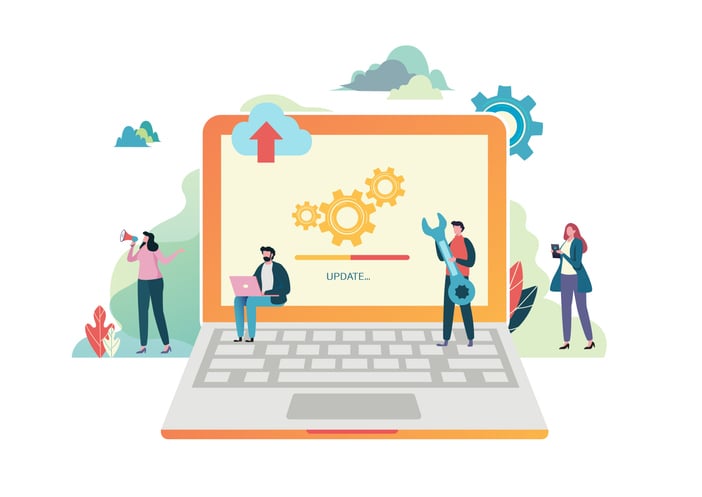
As much as we hate to do this, it’s time for a little tough love: stop comparing the cost of competing CRMs when you’re shopping. You’re focused on the wrong number.
In our experience (full transparency, it’s our experience selling a CRM), cost is the first (and sometimes the last) question we get. And you can somewhat control the cost of a CRM....number of emails blah blah blah...but at the end of the day, it’s not quite as important as looking at how much money you can raise using that CRM.
Your return on investment (ROI) – how much money you raise – is what needs to be measured. Not the cost.
Sometimes nonprofits don't spend much time looking at ROI or a balance sheet, but these metrics can have a direct impact on your mission. Treating a nonprofit like a for-profit has some benefits!
Both nonprofits and for-profit businesses have the same goal: money. That’s your ROI, but you call it fundraising. And to improve your ROI, you lean on the most corporate phrase of all time and look at (and improve) your profit margin.
To increase your “nonprofit profit margin” (which is such an oxymoron), you have two levers you can use. You can lower your cost per donor, or you can get more donors.
(Or, you might think, you can get more donors, which will lower your cost per donor AND improve your ROI. Indeed. We’re getting there.)
Donor Acquisition Costs
This is where we start, because it’s such a critical metric. The Donor Acquisition Cost, or DAC, is simply this:
Total Costs
Total Number of Donors Acquired
Calculating your DAC gives nonprofits two key pieces of information. One, it tells you how much you're spending on donor acquisition. Two, when you tie DAC to specific campaigns, you’ll be able to quickly see which campaign is the most effective.
Note that “costs” is a loosey-goosey term. Does it include salaries and overhead? Postage? The cost of events? Let’s say, for the sake of this article, we’re just talking about nonprofit technology.
Your DAC isn’t going to be the same as anyone else’s, so just start calculating it after your next fundraising initiative. Whatever that number is can be your benchmark, and success will mean that number declines over time.
Determining the ROI of a CRM
Okay, you know your cost per donor.
Now let’s talk about an organic way to lower your cost per donor and see how you’re going to get more donors.
And this is where we talk about how nonprofits should evaluate CRMs. Not on their monthly cost, or their cost per user, or how funny the sales guy was. Nonprofits must evaluate CRMs on the value they will bring.
No checklist or blog article on the best CRMs can tell you a system's value. It’s more unique and granular than that.
The value is measured most easily by posing some questions to yourself.
- What are my most successful fundraising efforts? These are going to be the bread and butter of your efforts, so if you answer, “Email, donation forms, and our annual auction,” then you need to make sure your CRM has email, donation forms, and auction software.
- What fundraising efforts are on my radar screen in the future? And this is a critical note: your CRM doesn’t have to have these features right out of the box, but you must be able to add them later. This is a brilliant way to keep costs down, have technology that scales as you grow, and keep your data in one place. Be wary of CRMs that can offer any functionality you want as long as you’re okay integrating with a third party. When the features are built in, your data’s all right there.
- In what ways can technology make my job easier? Changes in technology mean there's always something that can be made easier. For many, the answer is automation. Then you want a CRM that automates email, billing reminders, newsletters, anything automatable. If you run a lot of events, then software that manages registration, volunteers, reminders, table and position assignments, and thank-you notes would relieve giant headaches. That’s where you find value, so you need event software in your CRM.
- What’s the cost of doing nothing? Keeping the system you’ve got and not doing anything to change it will keep you right where you are. And if that’s okay, you probably wouldn’t be reading this article. The right technology can help you attract more donors and raise more money.
CRM ROI is a BDD (Big Darn Deal)
(We just like acronyms.)
At CharityEngine, we understand budgets, and we understand working within budgets. This article doesn’t suggest spending more than you’re able. It simply suggests evaluating your tech stack on how much value it can bring.
Let’s look at an example. Suppose your CRM costs $300 a month and you send 5,000 emails a month. On average, 80% of your emails get delivered and (again on average), each delivered email raises $15. So 4,000 delivered emails raises $60,000. $300 a month in technology costs gives you an ROI of $60,000.
If you upgrade your CRM and spend $500 a month but the new CRM offers 98% email deliverability, your 4,900 emails will raise $73,500. $200 more in monthly technology costs would earn your nonprofit an additional $13,500.
See what we mean about value? It costs a little more, but it’s a better fit for you to support your mission, and the ROI skyrockets.
This is the best advice we can give any nonprofit shopping for technology. Stop looking at the price tag and start looking at the features and how you’ll use them. See which CRM is going to have the most tools for you to find and engage new donors (look at stats like email deliverability as well as number of tools like peer-to-peer or text-to-give), and match up what your nonprofit does best with the tech that gives you the most bang for your buck—and the most bang for your ROI.
So go forth, measure value, and let cost come in second. Can you call us if you’re interested in our CRM? Sure, but it’s our intent and hope that you take this article for what it is. It’s not a sales tool; it’s taking years of experience working with nonprofit technology and sharing this information based on what we’ve learned.
But let’s just say we didn’t make up 98% email deliverability. 😉


-2.png)
